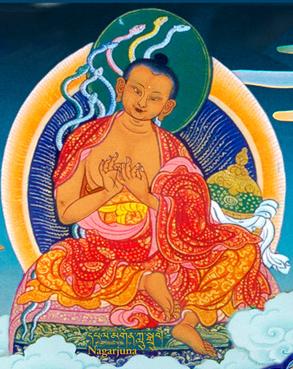Arya Nargarjuna
Mulamadhyamaka-karikas
Fundamentals of the Central Philosophy of Buddhism
 Section 11: An Analysis of the Past (purva) and Future Limits (aparakiti) of Existence (samsara)
Section 11: An Analysis of the Past (purva) and Future Limits (aparakiti) of Existence (samsara)
XI.1.
The great ascetic Buddha said: “The extreme limit (koti) of the past cannot be discerned.”
“Existence-in-flux” (samsara) is without bounds; indeed, there is no beginning nor ending of that existence.
XI.2.
How could there be a middle portion of that which has no “before” and “after”;
It follows that “past,” “future,” and “simultaneous events” do not obtain.
Birth and death are not separate/different, not simultaneous/the same.
XI.3.
If birth is regarded as the former, and growing old and dying are regarded as coming into being later,
Then birth exists without growing old and dying, and something is born without death.
XI.4.
If birth were later, and growing old and dying were earlier,
How would there be an uncaused growing old and dying of something unborn?
XI.5.
And a birth which is simultaneous with growing old and dying is likewise impossible;
For, that which is being born would die, and both would be without cause.
XI.6.
Since the past, future, and simultaneous activity do not originate,
To what purpose do you explain in detail the existence of birth, growing old and dying?
XI.7.
That which is produced and its cause, as well as the characteristic and that which is characterized,
The sensation and the one who senses, and whatever other things there are —
XI.8.
Not only is the former limit of existence-in-flux (samsara) not to be found,
But the former limit of all those things is not to be found.
Source: Orientalia





